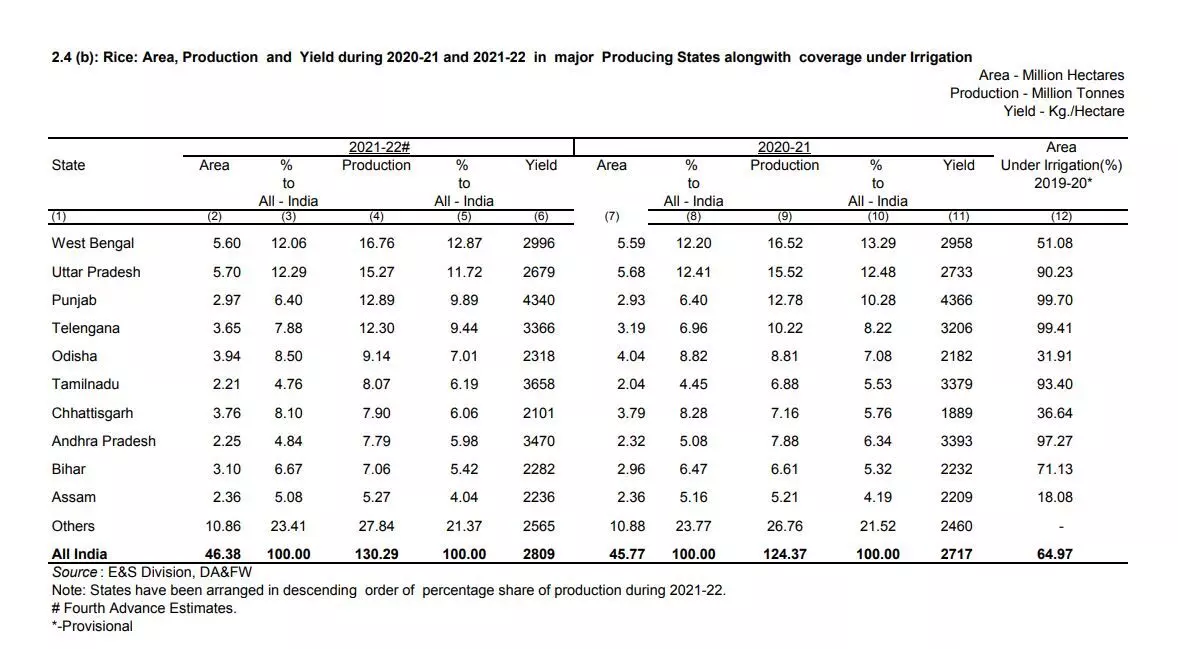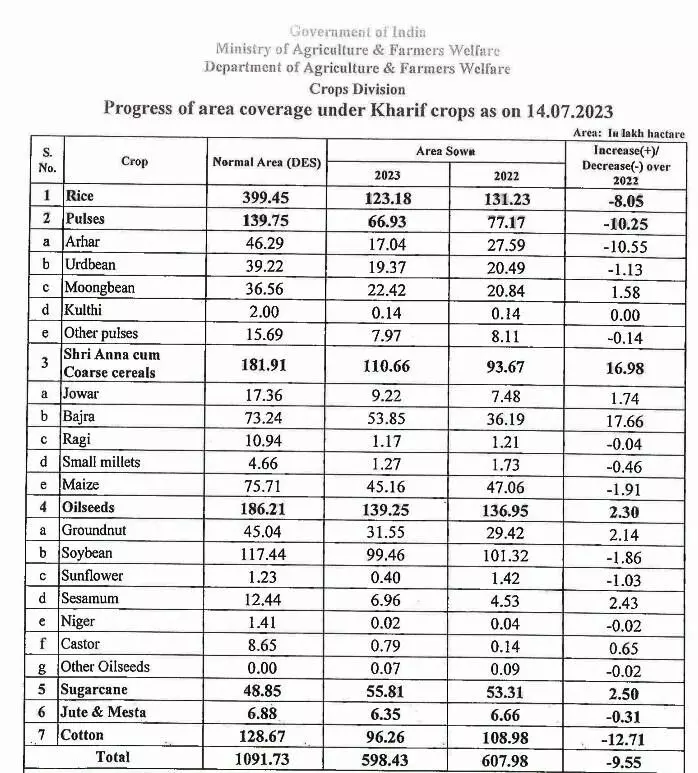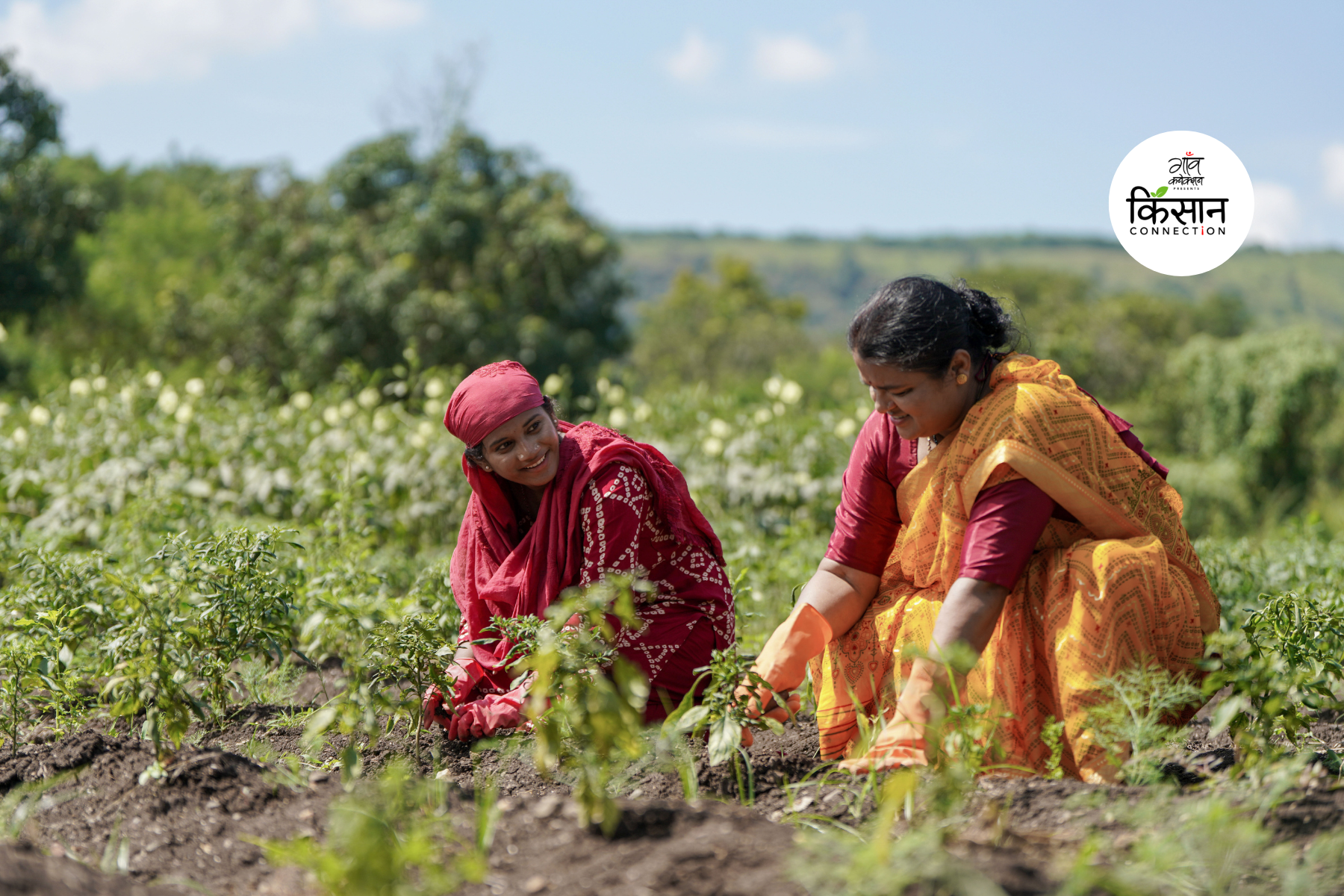On July 20, yesterday, the Union government placed a complete prohibition on the export of non-basmati rice. This is seen as a preemptive measure to ensure food safety in the country as some of the major paddy growing states in the country are either facing floods, or witnessing drought-like conditions in the monsoon season.
The announcement is widely being perceived as an escalation by the Union Ministry of Consumer Affairs, Food & Public Distribution of its related order last year on September 8 when it had placed a 20 per cent tax on the export of non-basmati and non-parboiled rice, and banned the export of broken rice.
In a press statement issued last evening by the ministry, it noted that despite the curb that was imposed on export last year, the retail prices of rice increased by 11.5 per cent over a year and three per cent over the past month.
“In order to ensure adequate availability of Non Basmati White Rice in the Indian market and to allay the rise in prices in the domestic market, Government of India has amended the Export Policy of above variety from ‘Free with export duty of 20%’ to ‘Prohibited’ with immediate effect,” the press statement mentioned.
It also cited an increase of 35 per cent in the rice exports as compared to the last year despite the export duty of 20 per cent.
“However, the export of this variety [non-basmati white rice] increased from 33.66 LMT [lakh (100,000) metric tonnes] (Sept-March 2021-22) to 42.12 LMT (Sept-March 2022-23) even after imposition of 20% export duty,” it mentioned.
“In the current FY 2023-24 (April-June), about 15.54 LMT of this variety of rice was exported against only 11.55 LMT during FY 2022-23 (April-June), i.e. an increase by 35%,” it added.
As per the ministry, this ‘sharp’ increase in exports can be ascribed to high international prices due to the geopolitical scenario, El Niño (a weather phenomenon often linked to drought in India) and extreme climatic conditions in other rice producing countries.
It is important to note that India is the leading exporter of rice in the world with a market share of as much as 40 per cent.
“India accounts for nearly 40 per cent of global rice exports, so the ban will likely impact global rice prices. Within Asia, the Philippines is likely to be most impacted, while Singapore, Hong Kong and Malaysia also depend on imports to meet much of their rice needs. Thailand could gain because it is a net rice exporter,” a note by financial holding company Nomura mentioned.
Floods & low rainfall in key rice-producing states
The floods in Punjab and Haryana, and insufficient rainfall in Bihar, Jharkhand and West Bengal have adversely affected the sowing of kharif paddy this southwest monsoon season.
Statewise, as per the Union Ministry of Agriculture’s Fourth Revised Estimate on rice production, West Bengal contributes the lion’s share of rice production in the country with a contribution percentage of 12.87 followed by Uttar Pradesh at 11.72 per cent.
As per the India Meteorological Department (IMD), the departure from normal rainfall in West Bengal, between June 1 and July 21, is at minus 17 per cent. Against a normal rainfall of 571.30 millimetres [mm], the eastern state has so far received 471.70 mm of rainfall in this monsoon season.

Uttar Pradesh has reported a rainfall departure of minus five per cent, whereas for Bihar and Jharkhand it is minus 41 per cent and minus 45 per cent, respectively. A large number of farmers in these states cultivate kharif paddy.
The situation is just the opposite in Haryana and Punjab where several districts are still inundated due to the massive floods that hit north India earlier this month.
As per a report published by National Bank for Agricultural and Rural Development (NABARD), titled as Water Productivity Mapping of Major Indian Crops, Punjab and Haryana, together roughly contribute almost 15 per cent of production of rice in the country.
Punjab contributes 9.89 per cent of rice production in India. Farmers in flood-hit districts have lost the paddy they had planted and are now forced to undertake a second sowing. This is likely to affect the next crop cycle of rabi wheat too.
According to the IMD, Punjab has so far recorded an excess rainfall by 47 per cent in this monsoon season, while Haryana has witnessed 57 per cent of excess rainfall resulting in a deluge in two northwestern states.
Also Read: As they sow, so they weep — Ground Report from flood-hit villages in Haryana
Kharif sowing affected
These inadvertent weather events have severely affected the sowing of paddy as reflected in the Kharif Crop Situation report released by the Union Ministry of Agriculture on July 14.
“About 123.18 lakh ha [hectares] area coverage under rice has been reported compared to corresponding period of last year (131.23 lakh ha). Thus 8.05 lakh ha less area has been covered compared to last year,” it mentioned.
What do rice exporters have to say about export prohibition

What do rice exporters have to say about export prohibition
When Gaon Connection contacted Pankaj Goel, the general secretary of Delhi-based The All India Rice Exporters’ Association, he stated the decision to ban export of non-basmati rice is a ‘learned decision’ timely undertaken by the Union government.
“The government has taken a very learned decision. Despite the 20 per cent export duty imposed last year, the export was still rising. Food security in the country is the topmost priority of the government,” Goel told Gaon Connection. “A major share of the Indian population consumes non-basmati rice and the government has acted in time to safeguard the interests of the local population,” he added.
“It is the export of basmati rice that is actually considered to be the heritage quality export of India in the global rice market. About 80 per cent to 90 per cent of Indians consume non-basmati rice. So, the decision to ban the export of non-basmati rice is apt and safeguards the collective interests of exporters, local population and the country’s commercial viability,” said the general secretary.
However, the exporters who are expected to bear the brunt of the ban, are not satisfied with the decision.
Vishal Tiwary, an Unnao-based exporter of rice, told Gaon Connection that these decisions will pave the way for other rice producing countries to eat off India’s share.
“The commercial affairs in the world market are ruthless. This is the second year in a row that the government has curbed export of rice. The countries which are desperate for a steady supply of rice will look for exporters elsewhere and it will hurt not just exporters like us but also the commercial interests of India at large,” complained Tiwary.
Also Read: Ground Report: Livestock and livelihoods swept away in floods in Haryana
‘Food security hard to ensure despite ban on export’
Meanwhile, Balram, a Jharkhand-based activist working for the non-governmental organisation Right To Food told Gaon Connection that a mere ban on export of non-basmati rice is not enough to guarantee food security.
“The list of beneficiaries of the public distribution system has not been updated for more than a decade now. It can only be updated after the Census exercise has concluded. The census hasn’t taken place since 2011 but the population has soared since then. There are at least 1,600,000 families in Jharkhand itself who are poor and need to be added in the PDS list,” he said.




















